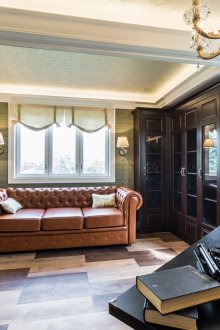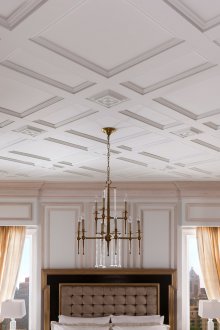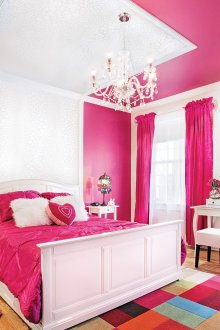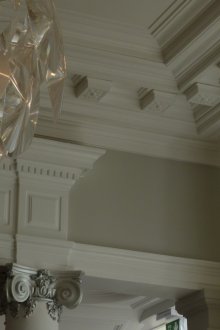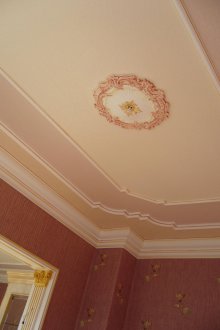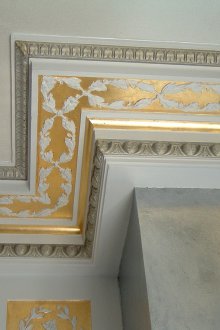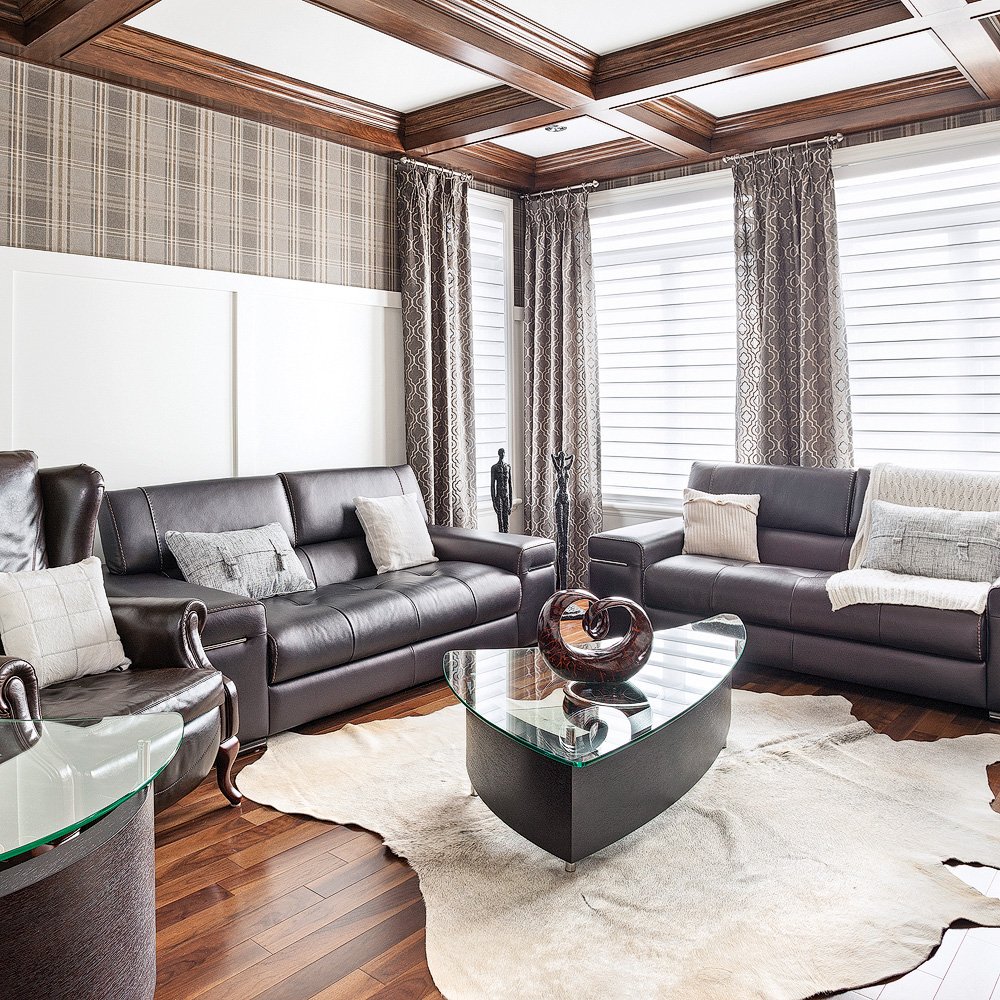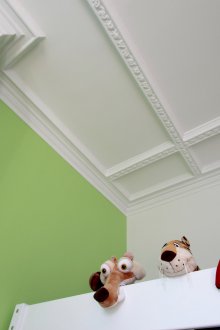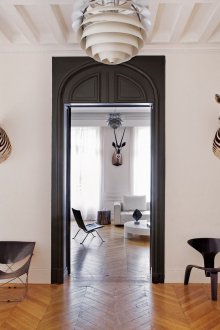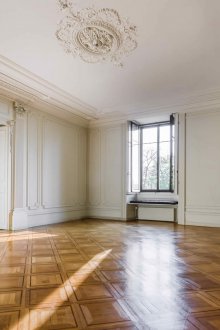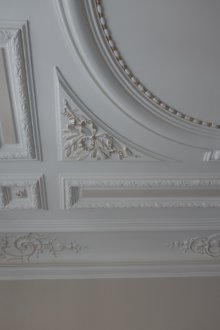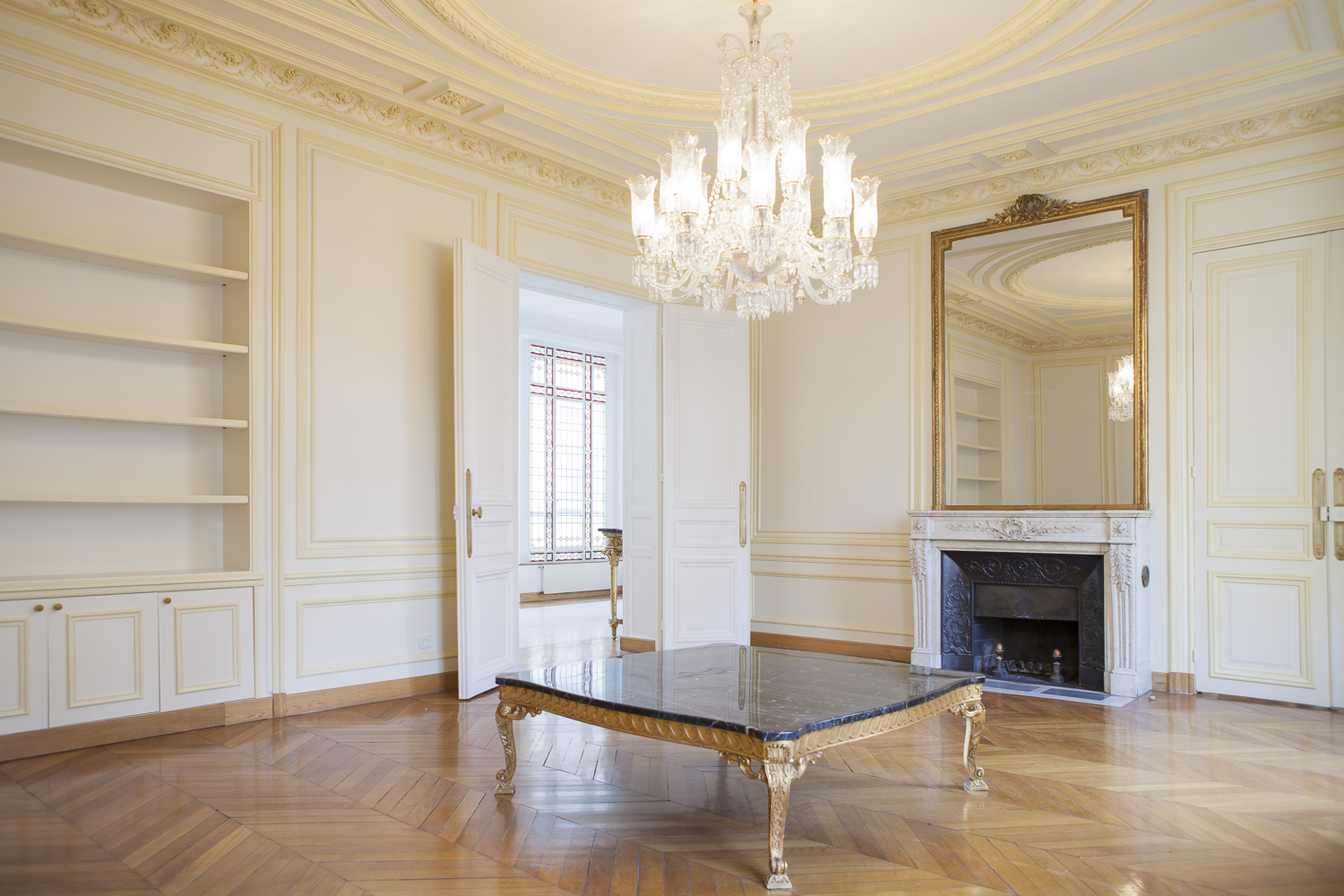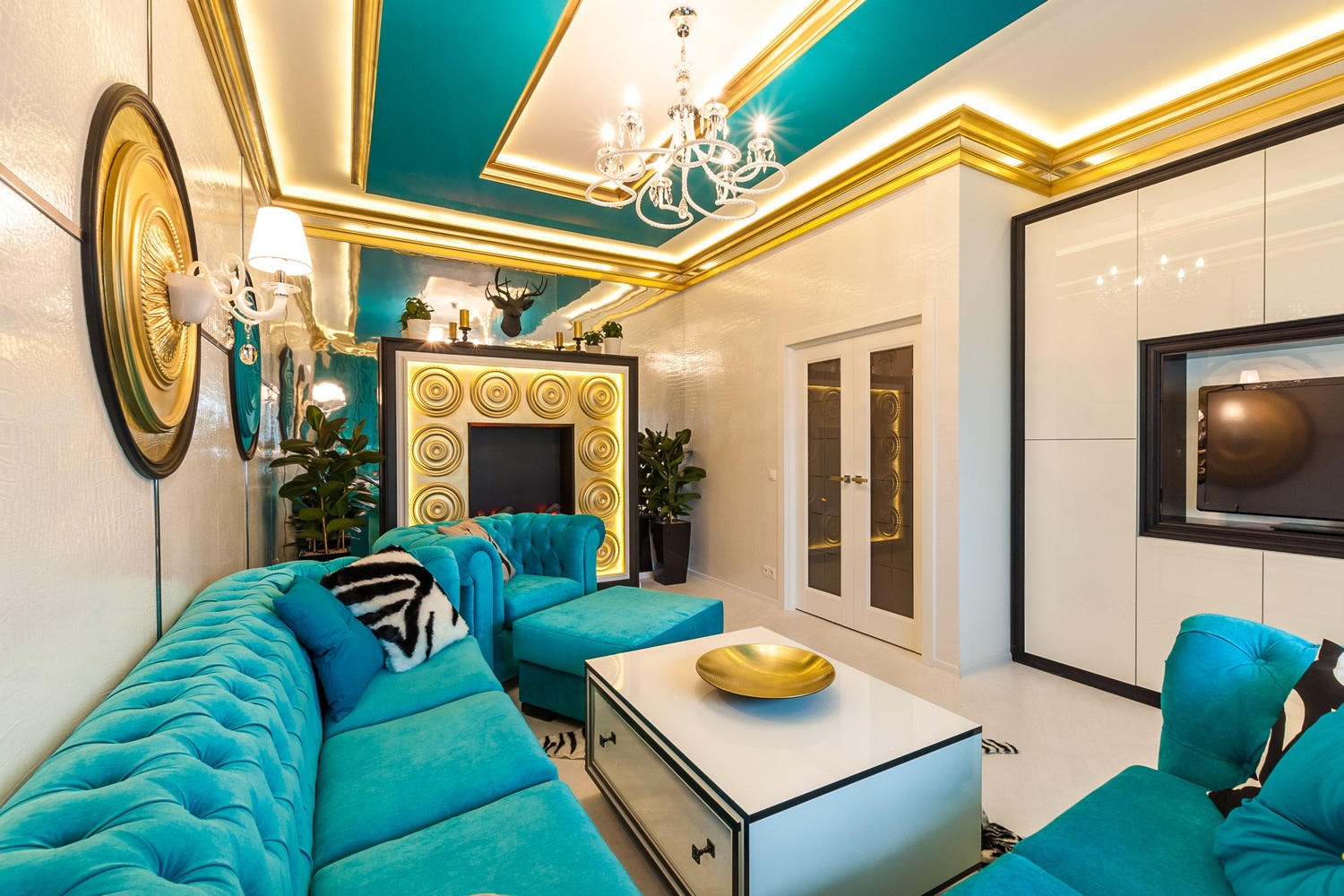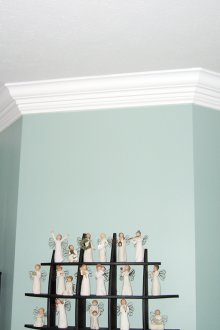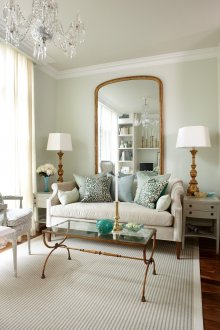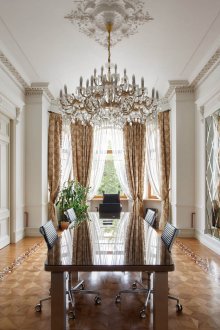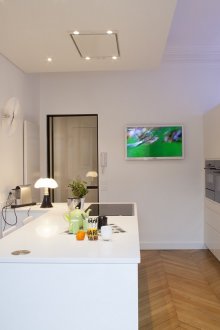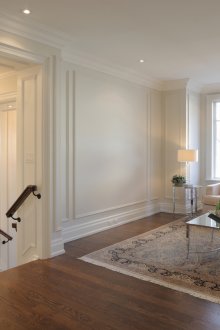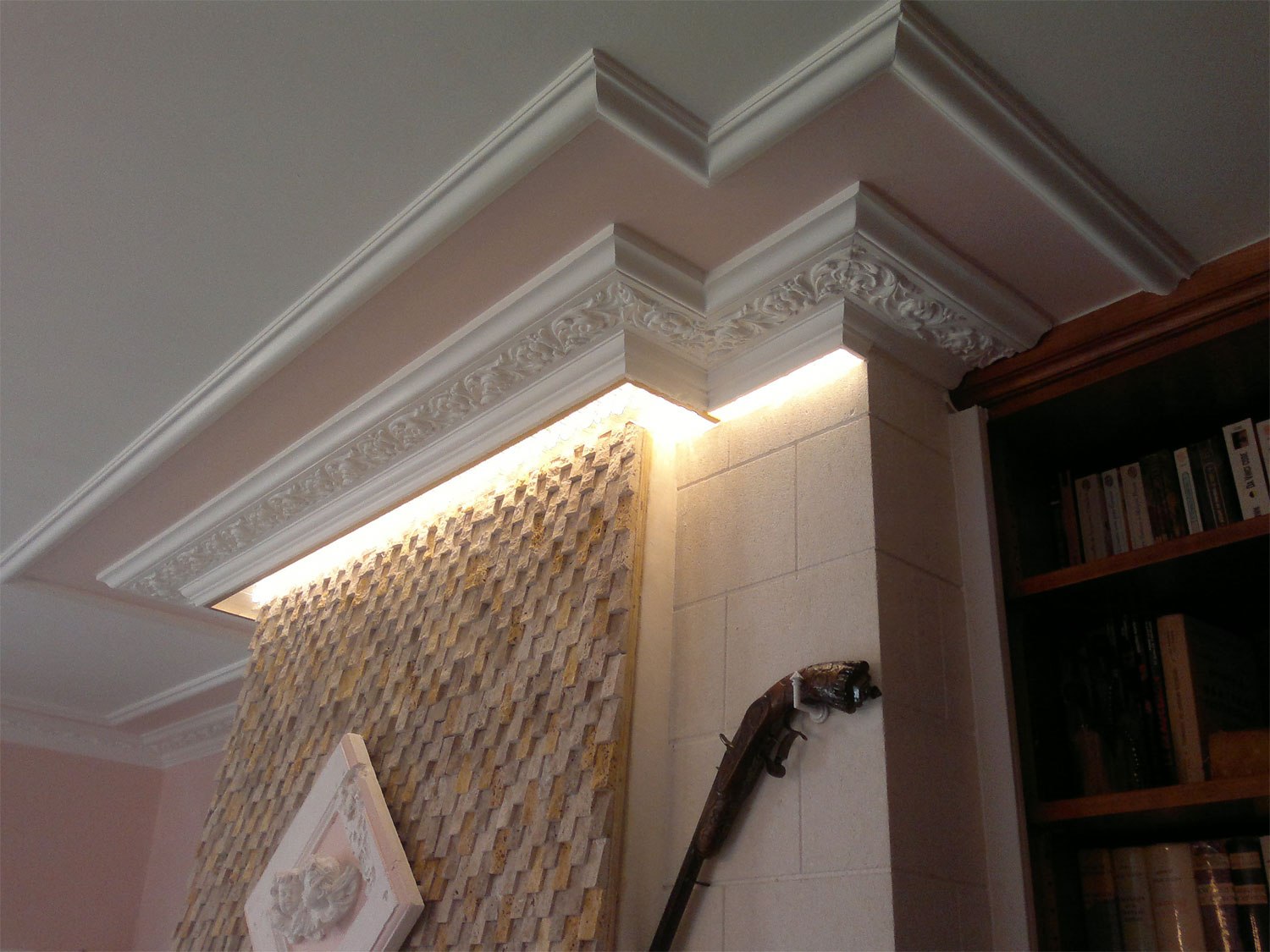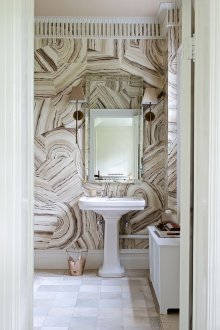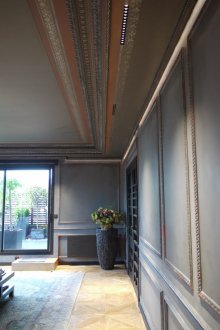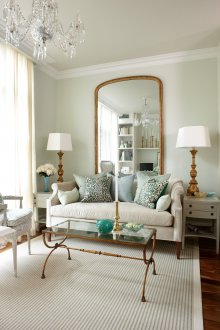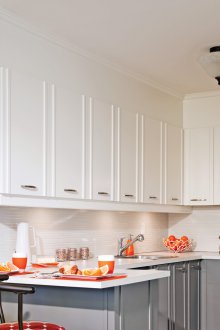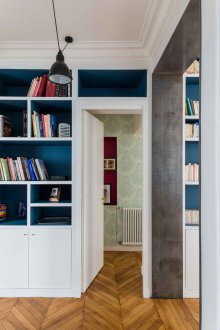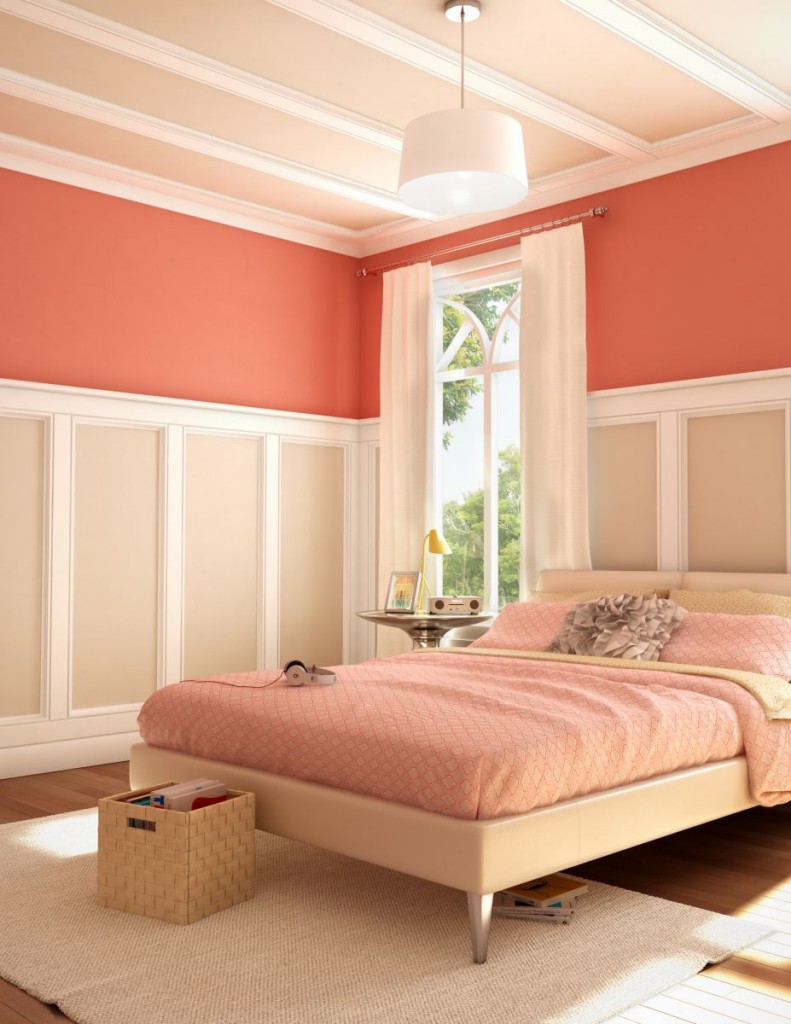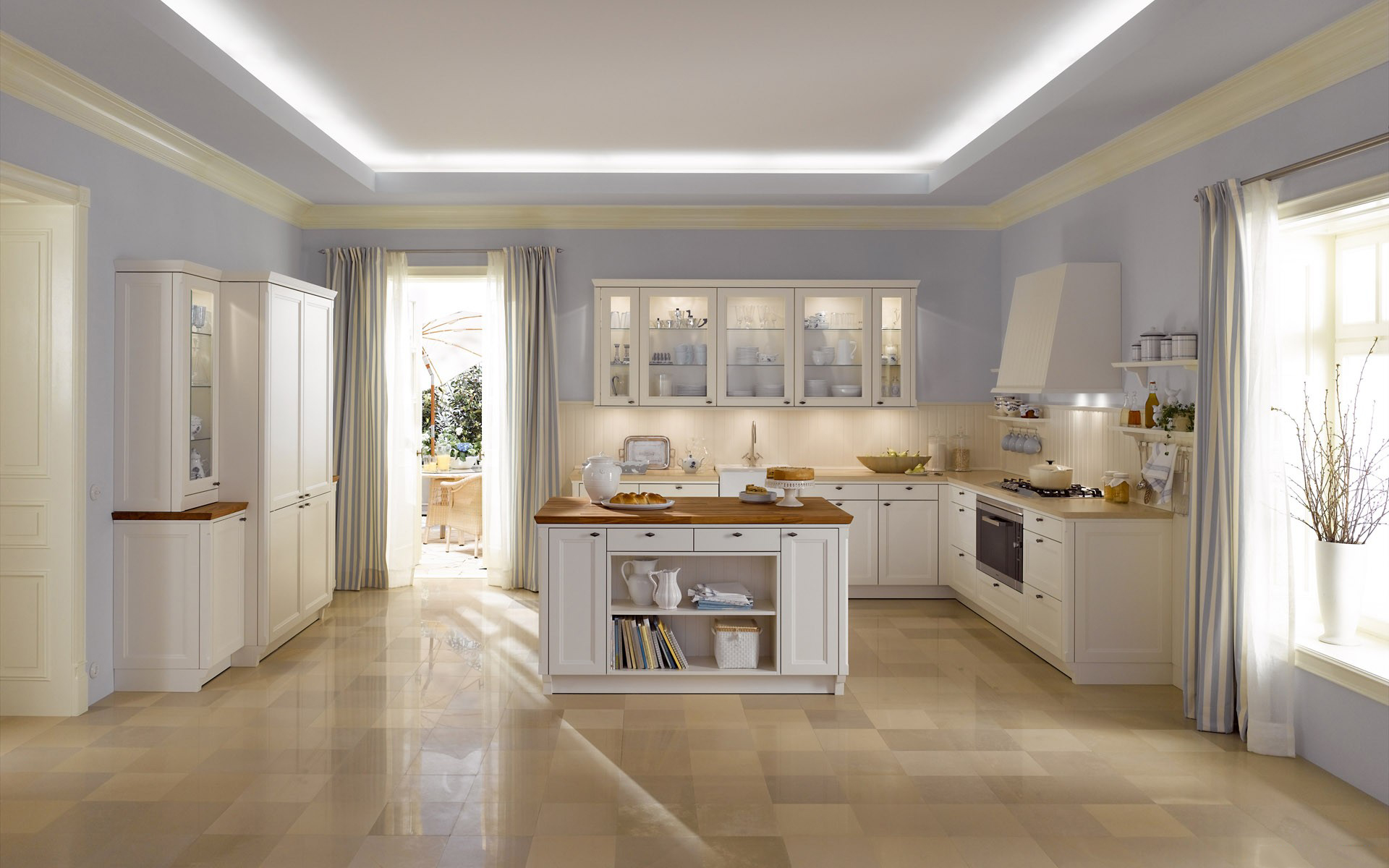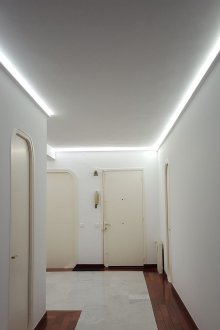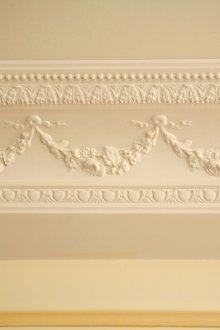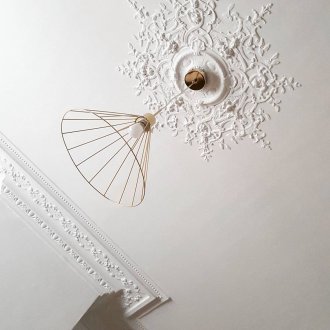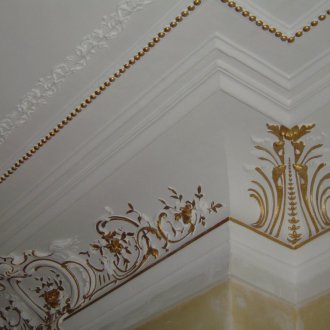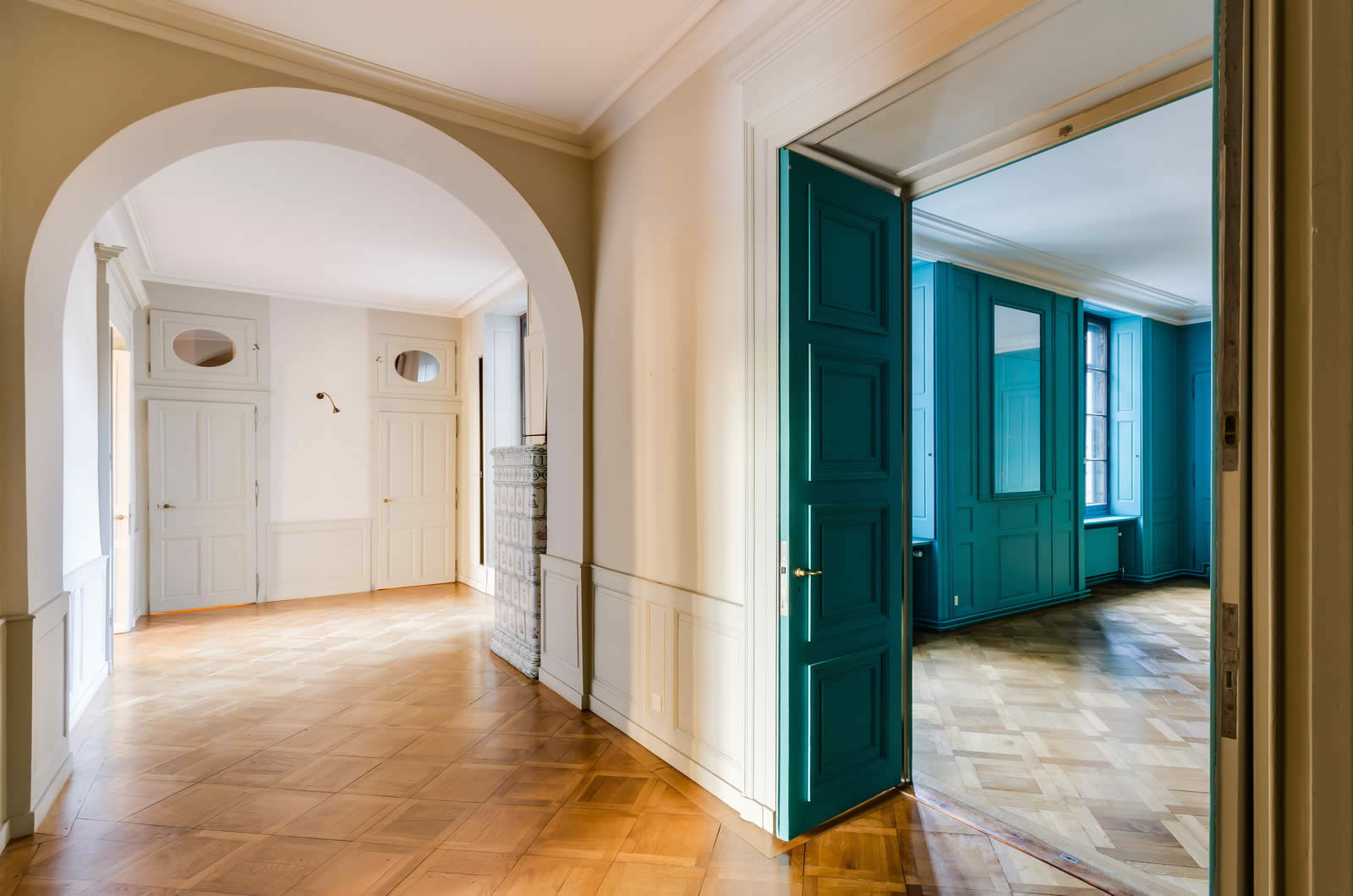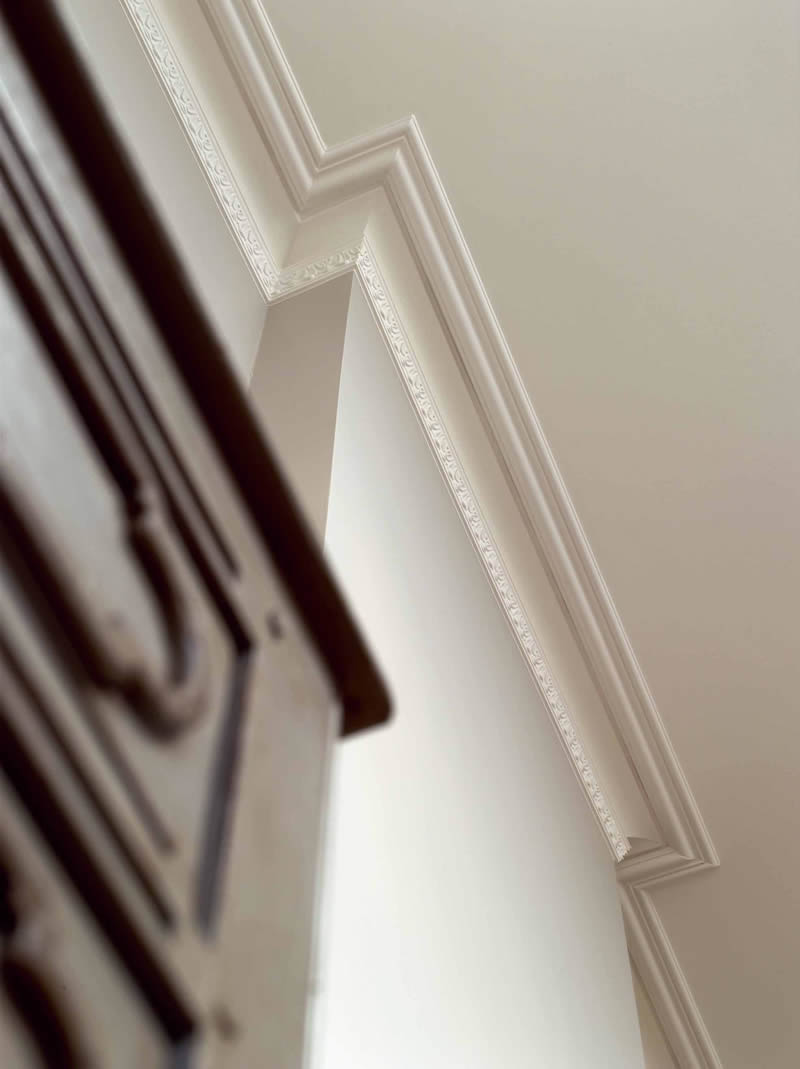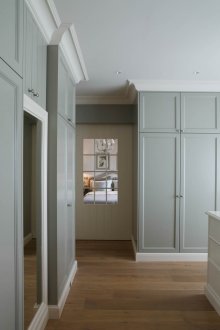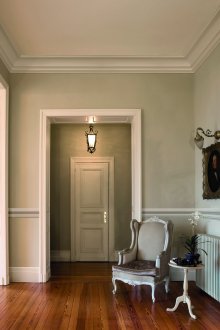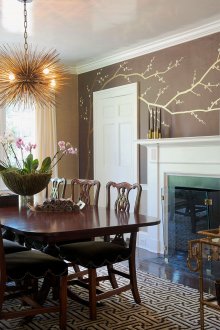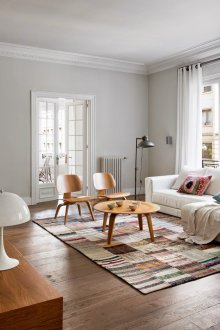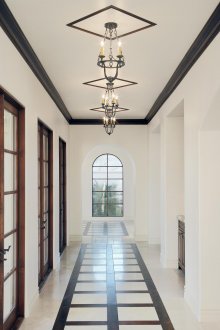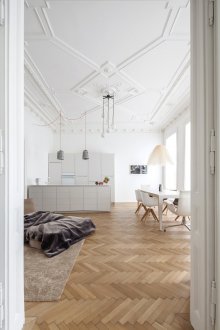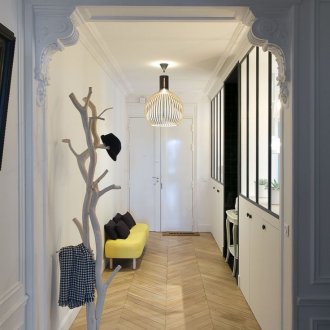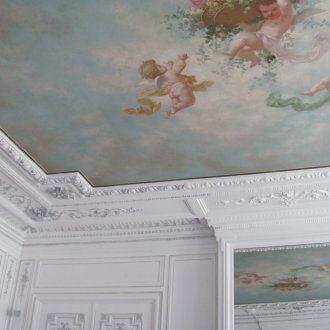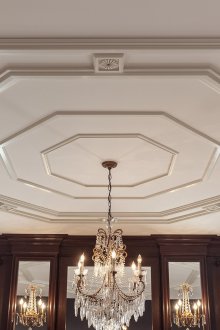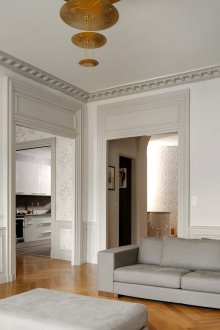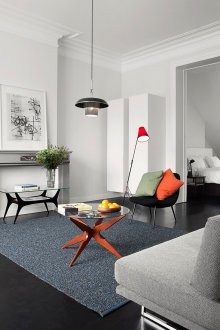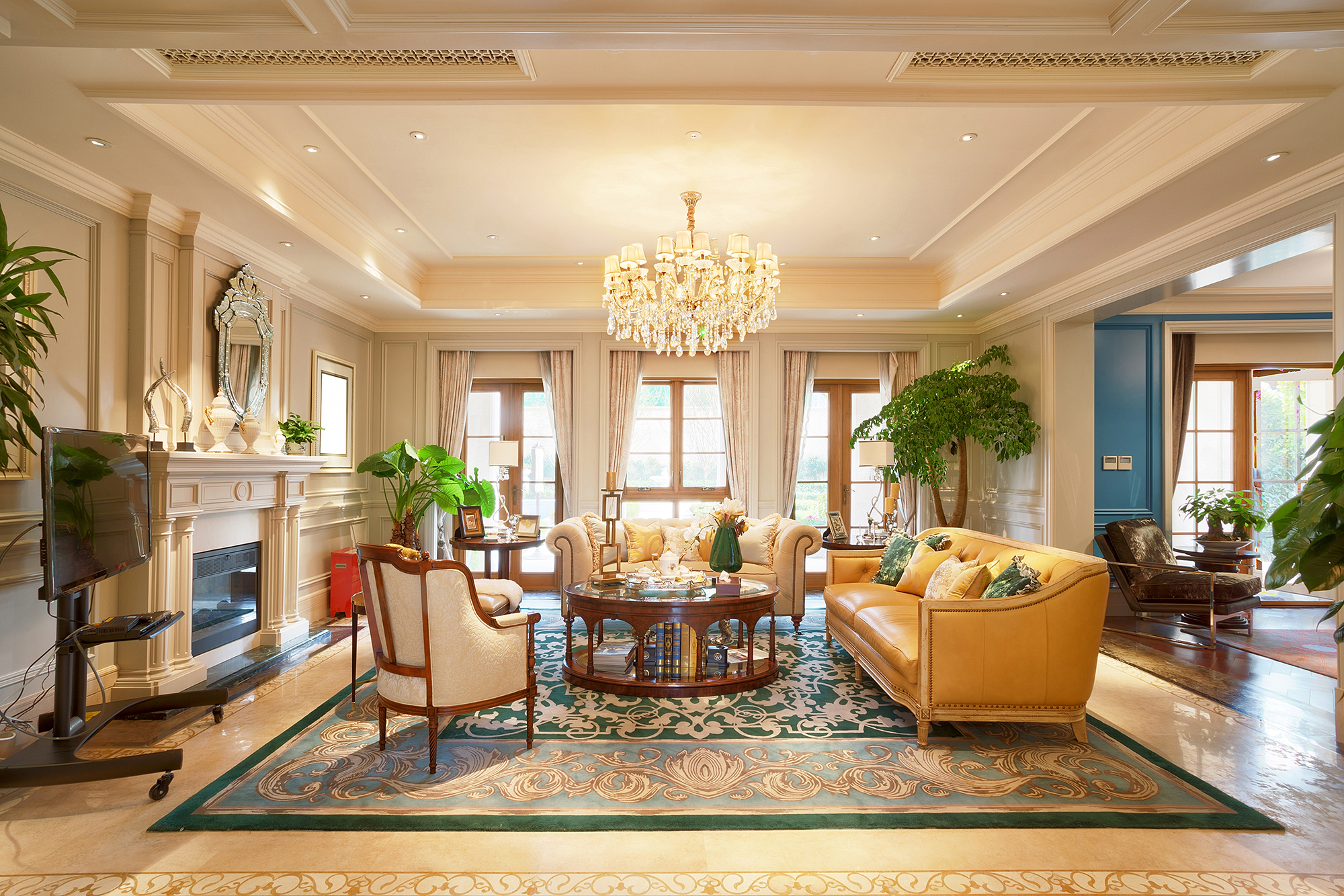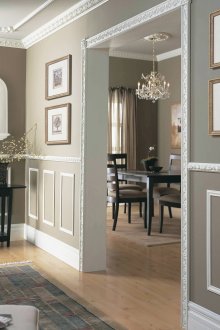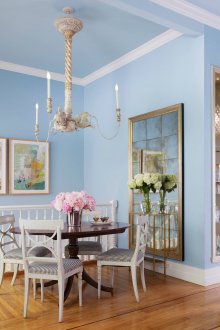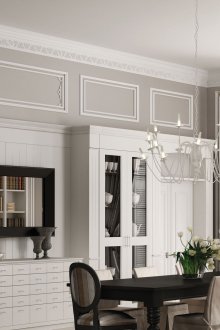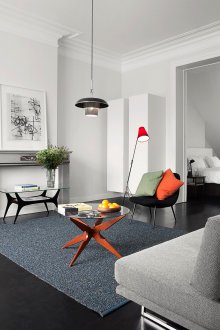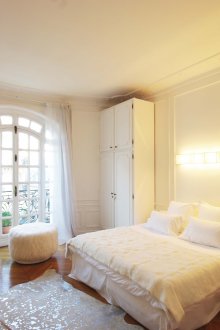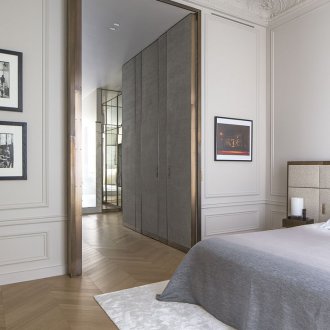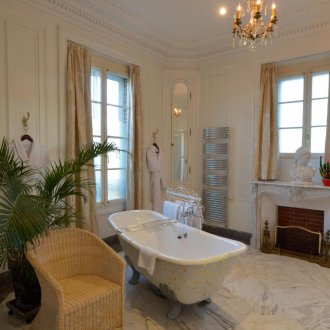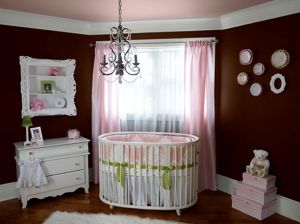Plinths on the ceiling (57 photos): choose the material and beautiful design
Content
The final chord in the repair of residential premises is to glue the plinth on the ceiling. It is also called a baguette, fillet, cornice or ceiling plinth. A paper panel glued to the top edge of the wallpaper thirty years ago delimited the ceiling and walls. She did not hide any defects and surface irregularities, and sometimes even emphasized. The decorative ceiling plinth not only highlights the aesthetic beauty of the finishing materials, but also helps to smooth out all the flaws in construction and repair work.
Classification of ceiling skirting boards
The variety of types and types of ceiling skirting boards makes it possible to design a home in any style. Ceiling cornices are classified by the material from which they are made, as well as by width and texture. Modern industry uses the following materials to make baguettes:
- Gypsum. Plaster moldings in modern housing are rare, mainly in the mansions and cottages of people with high incomes. You can also find gypsum baguettes in buildings related to historical monuments. Using a gypsum ceiling plinth in the interior, you should remember about its fragility and high weight. The installation of such a baguette is best entrusted to the master.
- Polyurethane. Fans of the design with elements of antiquity liked the polyurethane baguettes because of the external resemblance to stucco molding. When using such a cornice, you need to carefully consider all the details. Despite the high cost, craftsmen prefer to work with polyurethane baguettes, since the material takes any necessary shape without external damage. Due to moisture resistance, it is possible to install a polyurethane ceiling skirting in the bathroom, and the property does not absorb kitchen aromas makes it suitable for kitchen decor. Such baguettes are also painted in any color, preserve the relief, easy to install and light in weight, suitable for stretch ceilings.
- Tree. Wooden baguette is suitable for design in a classic style with elements of decor from the same material. Often used for wall decoration with brown or dark beige wood paneling, or with cabinets high for the ceiling. Designers recommend using a wooden cornice in combination with wenge furniture. When purchasing a ceiling plinth made of wood, you need to pay attention to the presence of ultraviolet treatment to minimize the environmental impact on the material and extend its service life.
- Polystyrene and polystyrene. Foam and polystyrene baguettes have the greatest variety of shapes and sizes. Ceiling skirting boards of these materials are of low cost, light in weight, moisture resistant, not susceptible to rot and fungal microorganisms. Their main disadvantage is fragility and a change in color under the influence of a light or heat source located near.
- Plastic or PVC. Plastic - the most common types of ceiling skirting boards due to the cheapness and variety of shapes, textures and shades. PVC baguettes are also light in weight, resistant to various influences, moisture resistant and durable. The plastic baseboard comes with a finished color, so you can immediately pick up the necessary options: black, and wood, and beige, and under wenge.
In addition to the above types, ceiling baguettes are classified by texture:
- laminated (with a flat surface);
- extruded (with recesses);
- injection (threaded).
Selection and installation of ceiling skirting boards
For reasons of economy, many people do not want to turn to the services of professionals when choosing and installing baguettes on the ceiling. Few people know how to choose a ceiling plinth for a specific design, and expert advice in this case will be helpful. But for those who make the choice, there are several recommendations:
- Beware of overloading the interior with decorative elements. If the walls are embossed, then the baseboard is better to choose a smooth one. With a smooth surface of the wall decor, baguettes with patterns will decorate the room.
- For high rooms, it is advisable to choose a wide ceiling plinth, since the aesthetics of the thin will be lost against the background of a large space.
- Plinth on the stretch ceiling is better to purchase polyurethane, which is able to withstand significant weight of the structure.
- When choosing a baguette for a two-level ceiling for the structure itself, it is recommended to purchase plastic or polyurethane, since gypsum or wood can collapse the structure. Wooden or plaster skirting boards with multi-level ceilings are allowed along the outer perimeter near the walls.
- If interior decoration requires a colored ceiling plinth, then you should buy a white polyurethane and paint it. If necessary, the color of the stain can be changed.
The standard sizes of baguettes are 2.5 m, so they will have to be cut during installation. You can choose a different length, but such eaves are rarely sold. The installation of a ceiling plinth, especially gypsum or wood, is best entrusted to specialists.
You can do it yourself, just follow some rules for installing ceiling skirting boards:
- mount the ceiling skirting should be from the corner;
- the corner should be dry and previously cleaned of dust and dirt;
- it is recommended to cut the baguette at an angle of 90 ° on a joiner's miter;
- with glue should smear the baseboard itself and then press it to the surface;
- installation of the plinth is recommended to finish in the middle of the room, since it is easier to join right angles;
- the length of the last insert is desirable to make 1 mm more than necessary so that there are no gaps;
- if there are gaps in the places where the baseboard is joined to the wall or ceiling, then you can fill them with putty or white silicone.
There is no special glue for mounting ceiling moldings on sale. When fixing skirting boards, some features should be remembered:
- polyurethane, polystyrene and plastic baguettes are fastened with polymer glue on a transparent basis;
- wooden skirting boards are fastened with fasteners, which are mounted additionally;
- gypsum baguettes can be fixed with a mixture of alabaster with PVA glue, heavy structures are recommended to be fixed additionally using special rails or screws;
- You can also use acrylic putty for installation of ceiling skirting boards (except gypsum and wood), with which cracks are closed and smoothed out.
When mounting the skirting on the ceiling without the help of professionals, you need to choose the right tool for fixing. Experts advise to purchase quick-drying adhesive mixtures, which also do not leave traces on the surface. If all repair work was carried out independently, then it is advisable to use putty, with which you can not only smooth out all flaws in the surface, but also hide an uneven cut or a baguette defect.
Some disadvantages of ceiling baguettes
The growing popularity of skirting boards does not make them ideal. A properly installed ceiling cornice will fit into any room design, but do not place bright light sources near them.You should also avoid mounting skirting boards next to radiators or pipes to prevent deformation. The exception is gypsum baguettes.
When mounting niches under the ceiling skirting with highlighting the surface of the ceiling and walls should be perfectly smooth. For finishing, you have to invite a professional, unless, of course, the owner has the skills of a builder.
